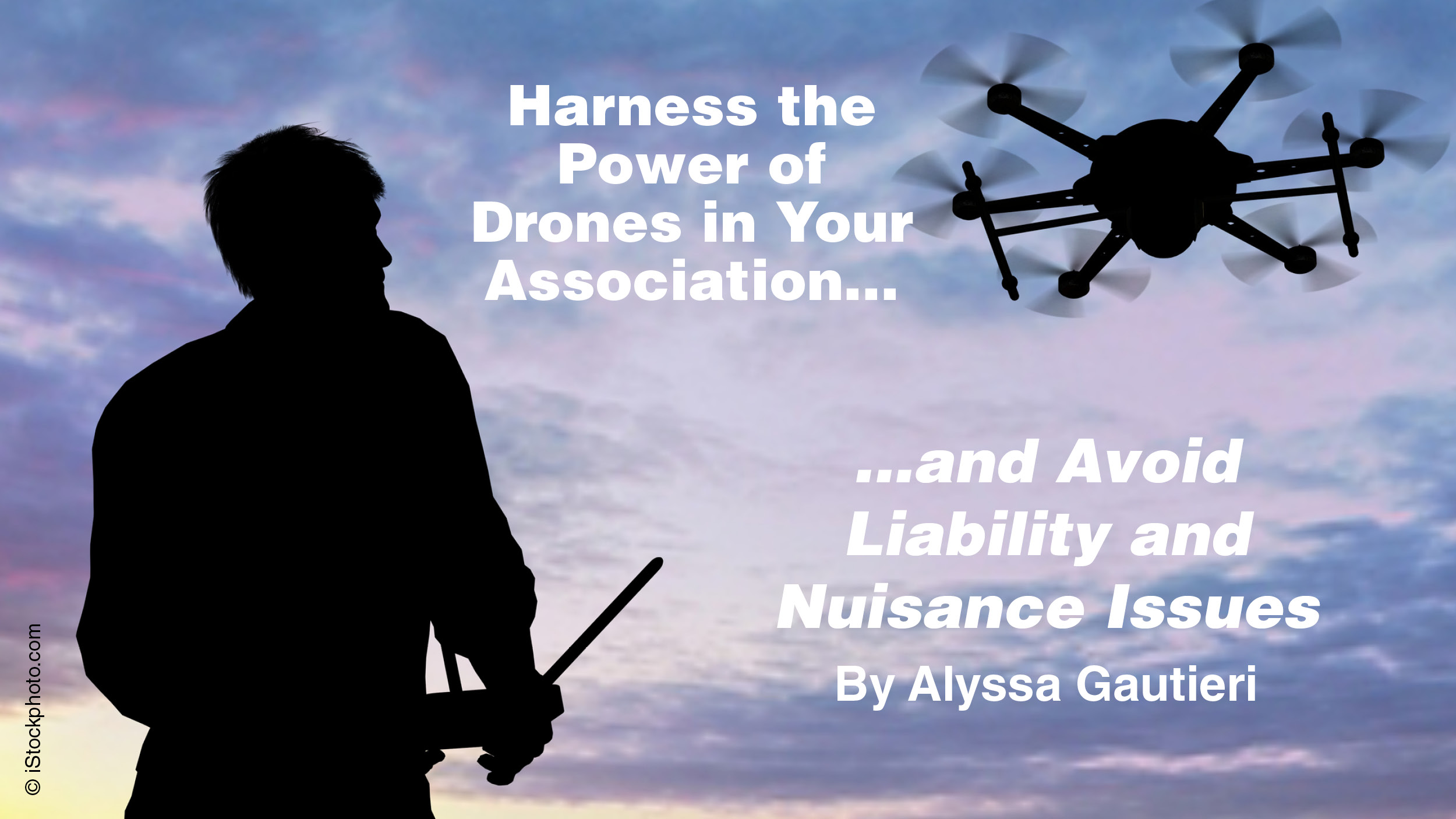
Harness the Power of Drones in Your Association — and Avoid Liability and Nuisance Issue
You own a 300-unit condominium and you want to inspect your building’s façade in the most efficient way. You’ve heard drones can be a great resource, but you don’t know what to look for when hiring a drone pilot. How can an association ensure they are hiring both a licensed and insured professional, as well as a company with the expertise to interpret data?
We spoke with Eric Koehler, Vice President of Falcon Drone Services (a division of The Falcon Group) and a Federal Aviation Administration (FAA) Certified Remote Pilot, about the technical abilities of drones and what necessary steps to take to ensure an association hires a professional drone pilot.
Drones are being used more and more for the inspection of rooftops, façades, landscaping, lighting and pools. New technology has enabled drones to travel in places within one centimeter precision over an extended period of time. “Drones can climb and cover everything from vast areas to very tiny areas. They see things that cannot be seen from an airplane or the ground,” said Koehler.
From urban high-rises to suburban, community-based buildings, drones can be used on condominiums of all shapes and sizes.
In high-rise buildings, drones can inspect façade and surface materials of walls, windows and balconies. Drones can carry a high-resolution zoom lens camera to inspect every square inch of a high-rise building. “It is a lot cheaper, safer and faster to send a drone up a façade because it has that infinite ability to hover and move around, as opposed to someone using a swing stage, ladder or scaffold,” he said.
Drones are also great for roofing and roadway inspections. Traditionally an engineer might climb onto a rooftop to inspect roofing material or insulation, but drones can photograph an entire community in much less time. According to Koehler, workers’ compensation insurance rates reveal that those who climb on ladders, swing stages, ropes, etc. have frequent insurance claims and liability risks. “With drones, it is extremely unlikely that someone will get hurt,” he added.
In addition to taking rapid photographs, drones can also perform mapping to locate damage and determine exactly how extensive any damage may be. Additionally, drones can carry equipment which enables them to take thermographic images, high-resolution videos, high-resolution photographs and precision measurements using lasers. “The data we capture does not tell clients everything, but the drone leads them in the right direction so, they can get to the right place more efficiently,” Koehler said. “Ultimately, drones save people time and money.”
While there are substantial benefits involved in the use of drones, the misuse of drones can lead to million dollar lawsuits, and it is extremely important for associations to practice due diligence before hiring a drone pilot.
According to Koehler, the two most important questions to ask a drone operator are: Are you an FAA Certified Remote Pilot and are you insured?
And, don’t stop there. According to Koehler, associations should ask to see the certificate of insurance and remote pilot certification. “Ensuring you have hired a licensed and insured professional minimizes the condominium’s risk exposure,” he said. “In the event that you hire an unlicensed operator, the association would be 100 percent at risk for any incident that may occur.”
While drones are much safer than traditional inspection methods, it is possible for the drone to fall on someone’s car, or worse — their head. Additionally, a resident may sue for invasion of privacy or trespassing. “These are situations in which the association would be held accountable, whereas if they had hired a certified and insured operator, the association could pass that risk off to the operator,” added Koehler.
David Dockery, an associate attorney at Griffin Alexander, PC, with offices in New York City and Randolph, New Jersey, agreed. “While a community association cannot avoid a lawsuit, it can take precautions to minimize liability. Foremost, the FAA requires any entity that flies a drone for commercial use to have a license under Part 107,” he said. “The association’s attorney should draft a contract which has this insurance requirement, and it should also provide a hold harmless and indemnification provision that in the case of personal injury or damage to property, the vendor will reimburse the association for costs and any associated litigation.”
To minimize complaints of trespassing or privacy issues, Koehler also advises associations to inform their residents of the time, date and altitude of the planned drone operation.
According to Dockery, “In order to avoid injury, there should be an understanding between the vendor and association as to the procedure for providing notice to the residents regarding when and where the drones are being used and what areas should be avoided.”
Residents may own drones as well. What should an association do in the case that a resident may invade the privacy of another resident? Some associations have restricted the use of drones in condominiums, or provided certain areas within the community in which drones can be flown.
“In general, Associations have the legal ability to enact rules and regulations concerning the conduct of their residents. As long as the governing documents give the association these powers, they can ban or provide rules regarding the use of drones,” said Dockery.
Koehler made another important point – when hiring a drone operator, an association should hire an expert who can offer solutions to potential problems. “Too often we are seeing drone companies that just fly a drone around and capture data that then the customer is unable to interpret,” he said. “If you are hiring an operator that has an area of expertise, such as engineering, architecture or thermography, the data they capture is more relevant and effective.”